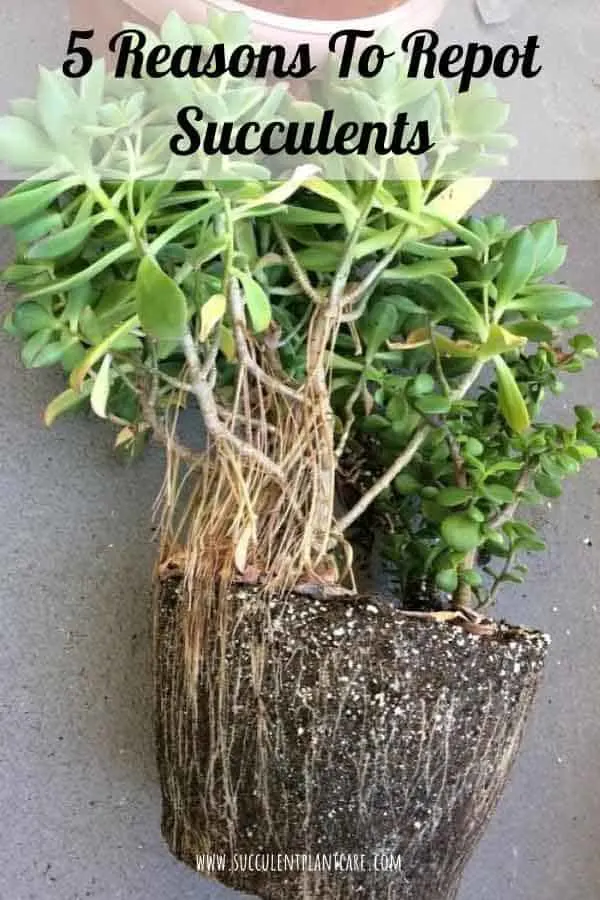How do you know when it’s time repot succulent plants? Most cacti and succulents do not to be repotted often.
They can thrive in pots and containers that seem too small for them or containers they have outgrown.
Some actually look great when they spill out of the pots and containers. Eventually, you need to repot your plants for a variety of reasons.

The 5 Common Reasons to Repot your plants are:
- When you just purchased the plant. Generally, I repot when I buy a new plant. See Repotting New Succulents. It’s a good idea to repot new plants to get them in a more suitable potting mix and also containers. Repotting new plants also gives you a chance to inspect the plants closely for problems such as root rot or pests.
- To get the plant in a more suitable potting mix. Another reason to repot is to provide the plants with fresh potting soil. Your plants need to be repotted periodically to replace the old potting mix with fresh potting soil so they can get the necessary nutrients they need to grow.
- To accommodate bigger plants. Sooner or later your succulents will outgrow the pot they are in. They can become top heavy, or you can see them spilling out of the container and shooting out roots from different parts of the plant. This shows that the plant is looking for more room to expand and grown.
- To promote growth. You can promote growth by repotting in a larger container. Plants kept in tight, compact containers adapt by growing slower. Repotting your plant into a large container will give them more room to grow. When given more room to grow, you can encourage the plants to grow larger more quickly. When plants appear to have stunted growth, it is also a good idea to repot to give it a fresh start.
- When plants become root bound. Plants become root bound when they outgrow the container they are in. The plant’s root system become tangled and you can sometimes see roots coming out of the holes. This is a good time to repot into a large container or you can choose to trim the roots instead and use the same container if you want to control growth.
Here’s how I repotted some of my overgrown plants:
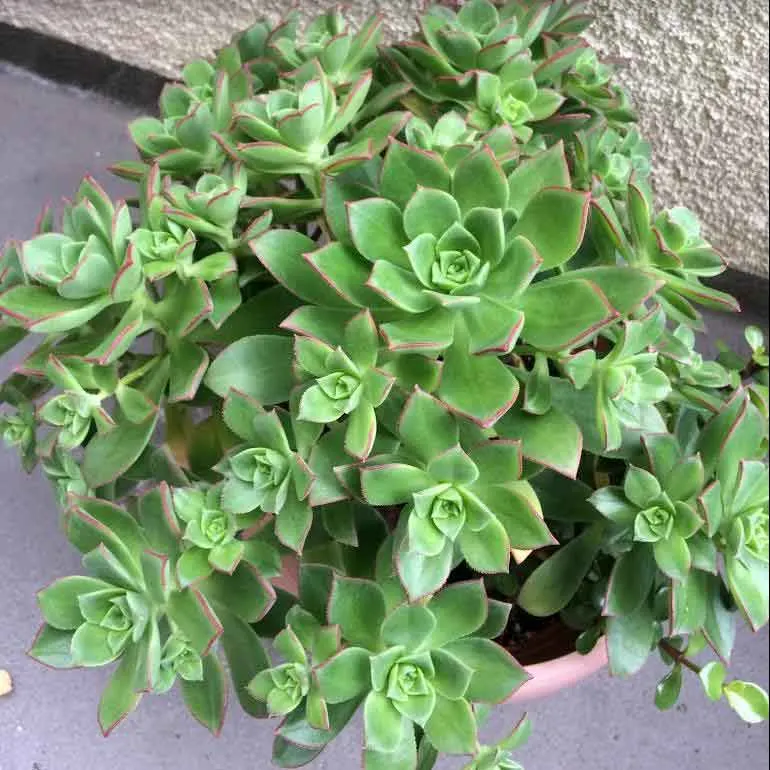
Aeonium Decorum ‘Green Pinwheel’
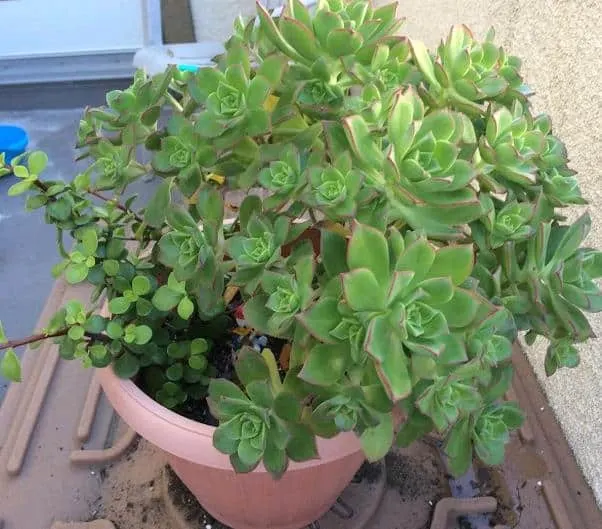
Portulacaria Afra (Elephant Bush)
This is an Aeonium Decorum ‘Green Pinwheel. I got this plant as a baby plant in a 2-inch pot that has grown to this. You look at this plant and it looks so happy and healthy and you’re probably thinking, why repot? I have a few reasons. This plant was placed in this plastic pot randomly along with these Portulacaria Afra (Elephant Bush) grown from stem cuttings because at that time I didn’t have anywhere to put these two in. Now they have both grown nicely and healthily. I wanted to separate the two and also place them in nicer pots.
Roots popping out everywhere
But the other reason why I wanted to repot is when you look closer you see all these roots shooting out of this plant left and right. I’m thinking the plant will do even better when I trim and separate this plant into several smaller plants and let them grow out on their own. This way I can multiply this plant more.
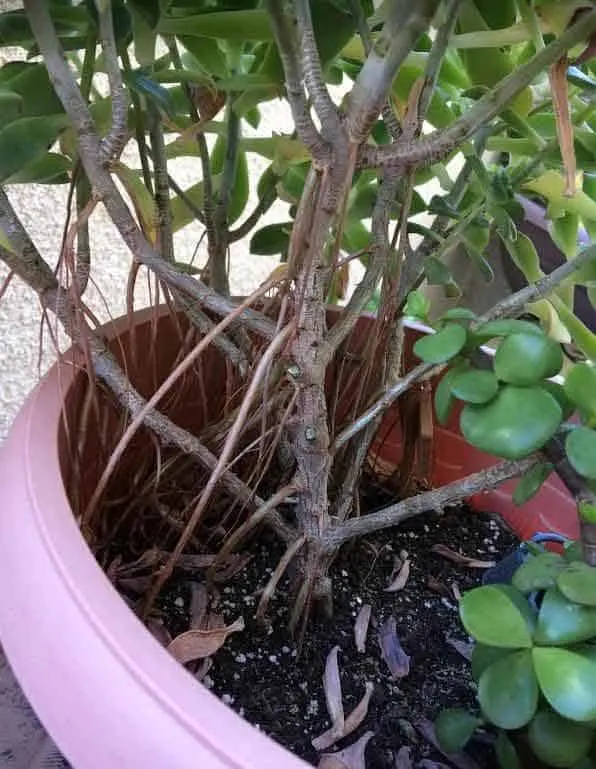
Here’s how they looked once out of the pot. You can tell both plants have developed very healthy roots.
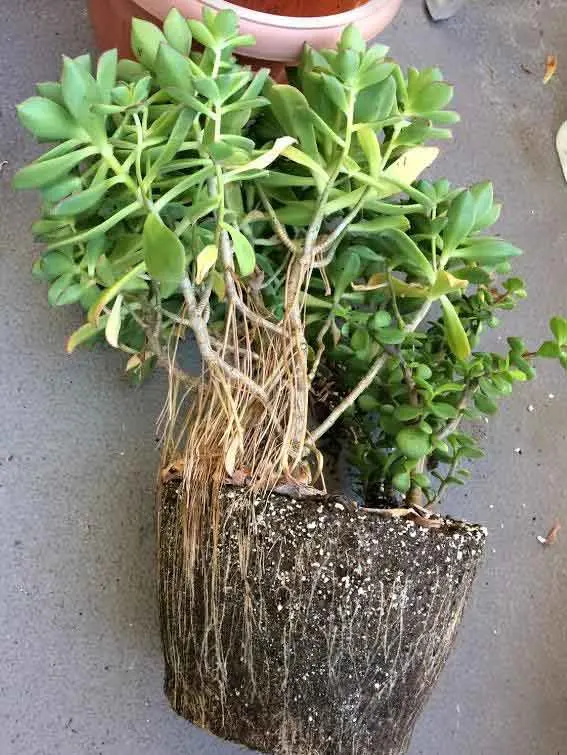
What I did was I carefully separated the plant into smaller plantlets, making sure to get some of the roots.
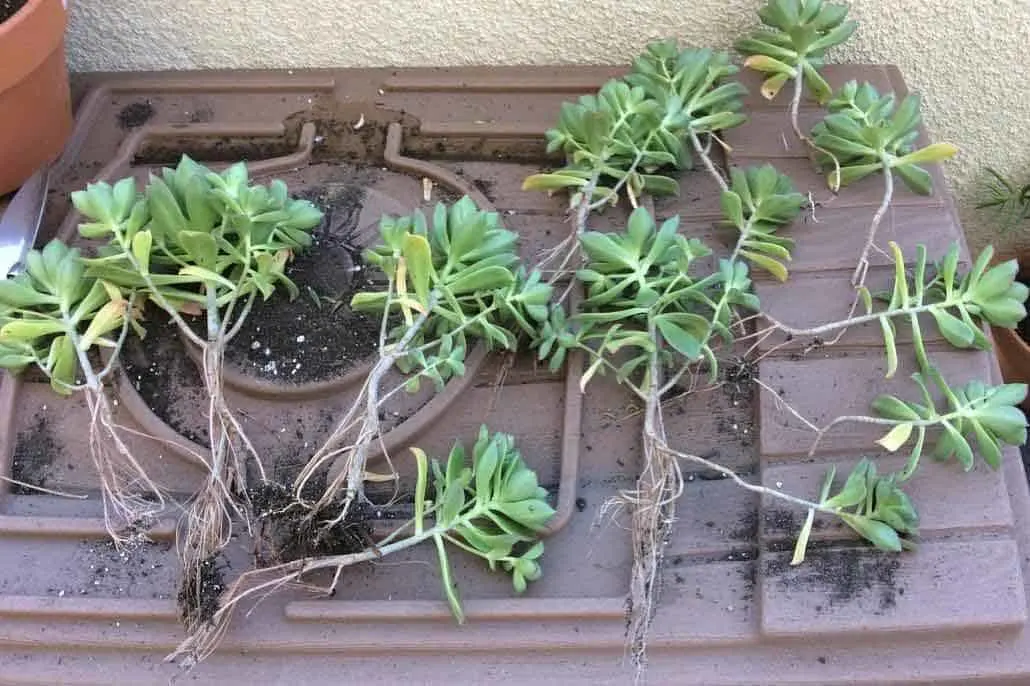
I used a good size terra-cotta pot and filled it with a mixture of cactus soil and perlite.
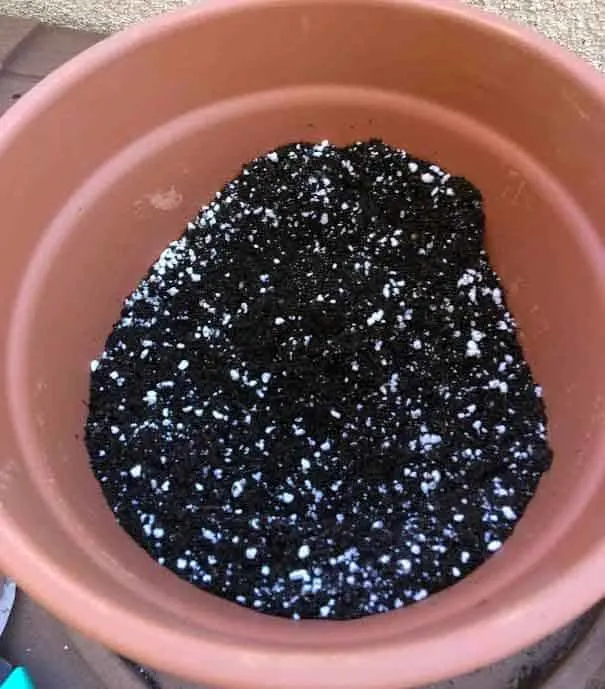
I let the cuttings dry for a day or two then planted them into the pot and gave it a good drink. Some people wait a few days before watering after repotting. I watered it right away because I know it’s been very dry and in need of water.
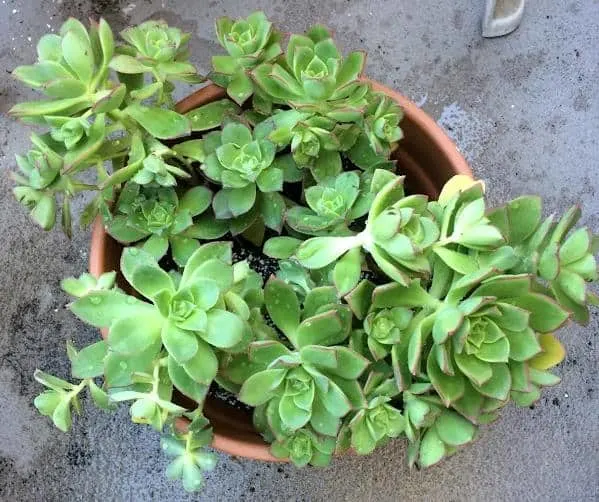
Some of the cuttings I left out because they couldn’t all fit in this pot. I potted each one in smaller pots that will grow into larger plants on their own. After all, this whole plant started from a small plant even smaller than these ones. These little ones I am giving away to friends.
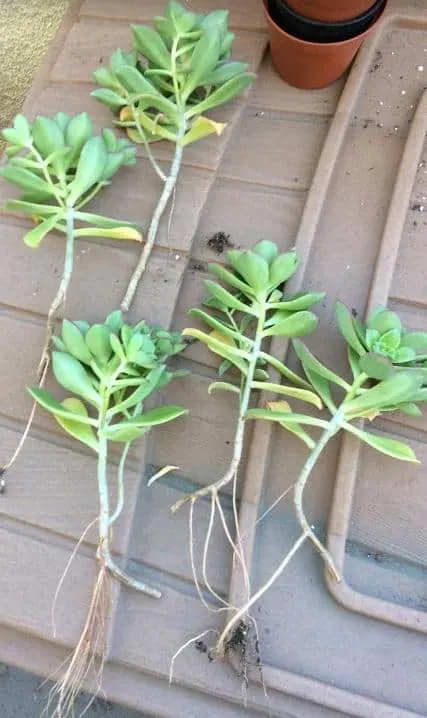
These Portulacaria Afra (Elephant Bush) I also separated and repotted in different pots, some to give away. By separating these plants, I am giving them more room to develop and grow and produce more baby plants.
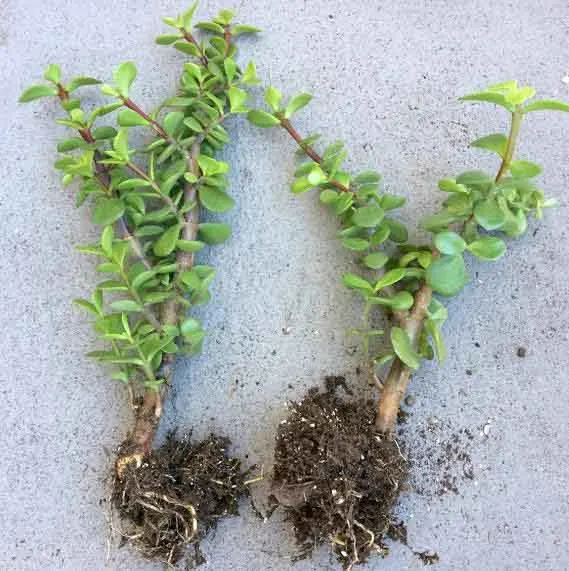
Here’s where some of the cuttings ended up. I separated them in different pots and planters to give away to friends. This one I gave to a friend who wanted to start growing succulents.
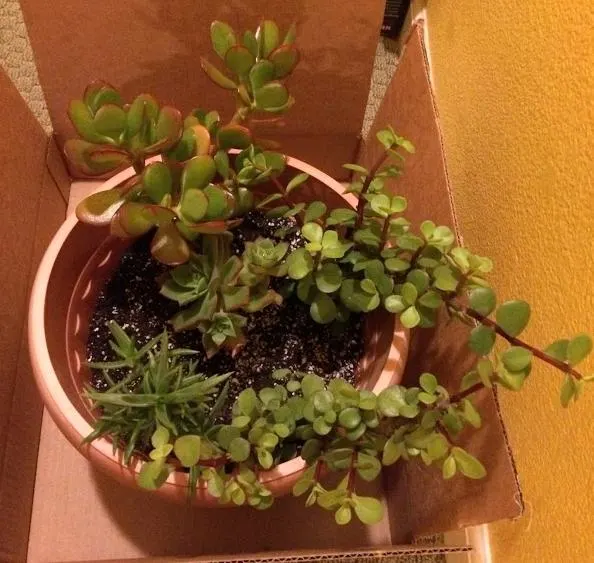
Another good reason to repot is when the plants are not thriving. Here are some examples below:
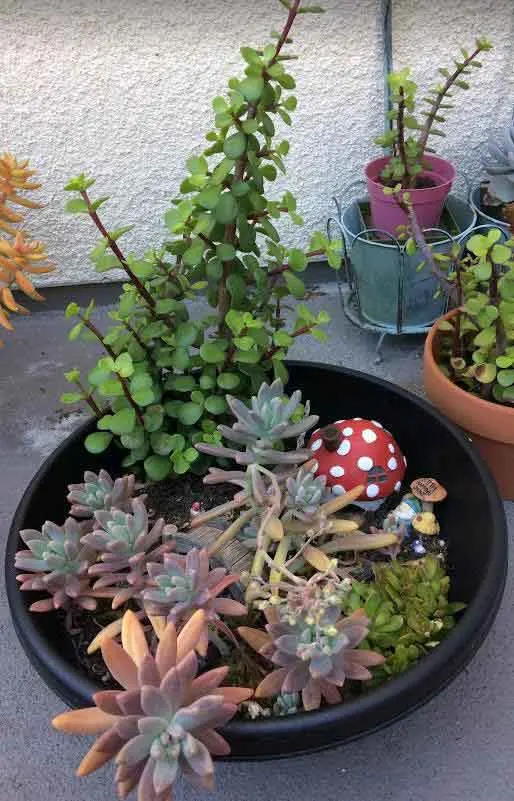
Another planter that’s been begging for my attention is this overgrown gnome garden I planted over a year ago.
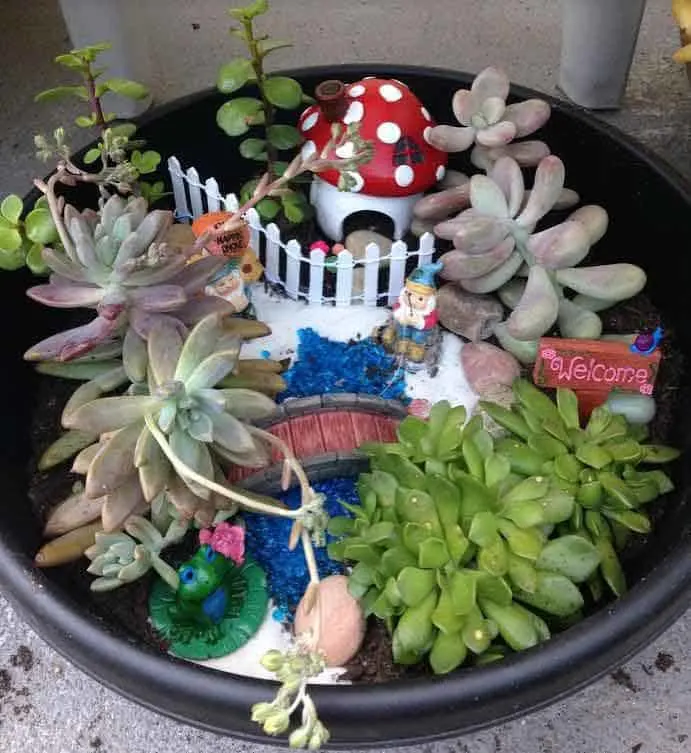
Here’s how this gnome garden looked when I first planted it over a year ago.
Sometimes you can revamp an overgrown planter without dismantling the whole thing by removing or trimming some overgrown plants. Please click on Revamp an Overgrown Garden to see how I did that. But the planter above was not one of those cases. These plants were not thriving for some reason and I needed to get them out of this old potting mix.
There’s three kinds of succulents in here: Sedum Carnicolor, Anacampseros Rufescens (Sand Rose) and Portulacaria Afra (Elephant Bush). The two plants that are not thriving are the first two I mentioned and are in need of attention. The Elephant Bush are just doing just fine and has tripled in size as shown here. I have these Elephant Bush growing everywhere. I use stem cuttings of this plant and stick them anywhere as fillers and they grow like crazy. In the original planter I also had Pachyphytum Oviferum (Moonstones) which I had already transplanted earlier in a separate pot.
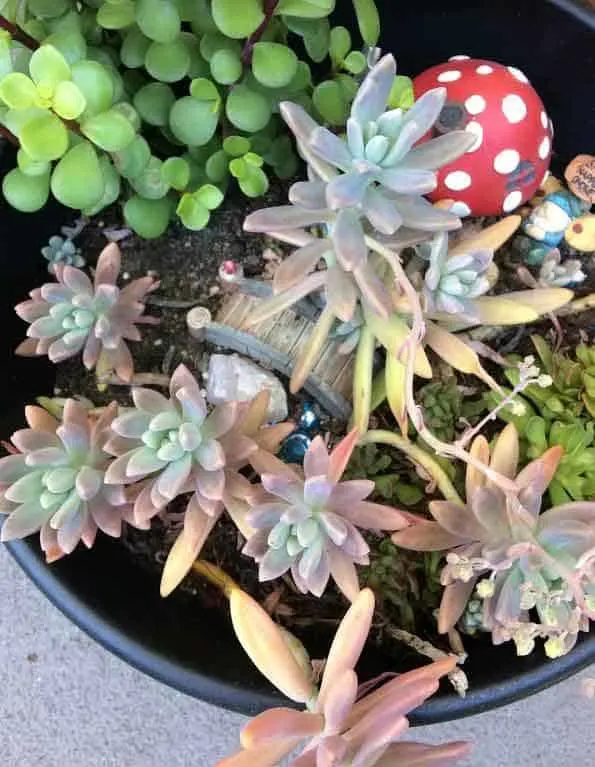
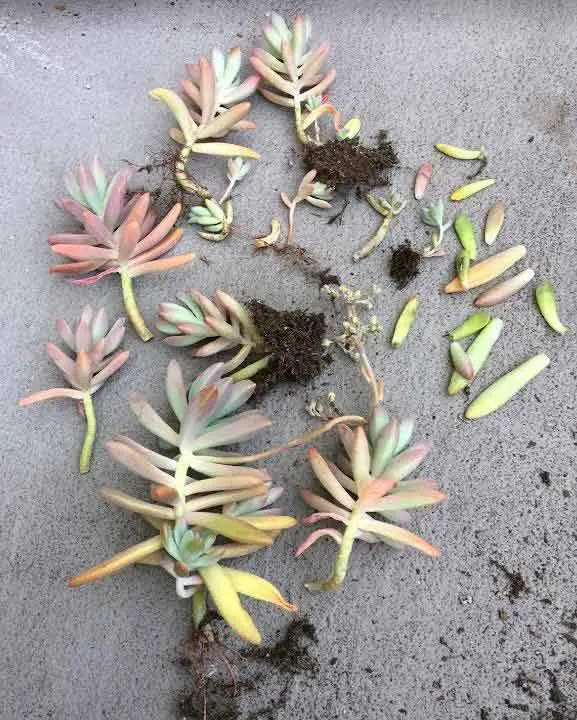
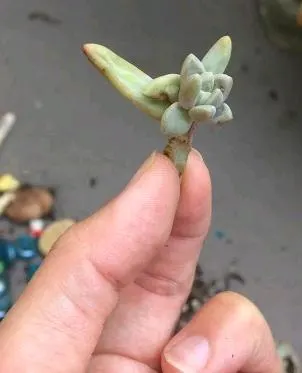
Trim the stems down
These Sedum Carnicolor were just looking like they need a trim and have become elongated. Some people may not mind the look but I chose to trim the stems down like this. They are a bit fragile and drop leaves easily but the good thing is the leaves also root and propagate easily. See how some of the leaves have propagated on their own already.
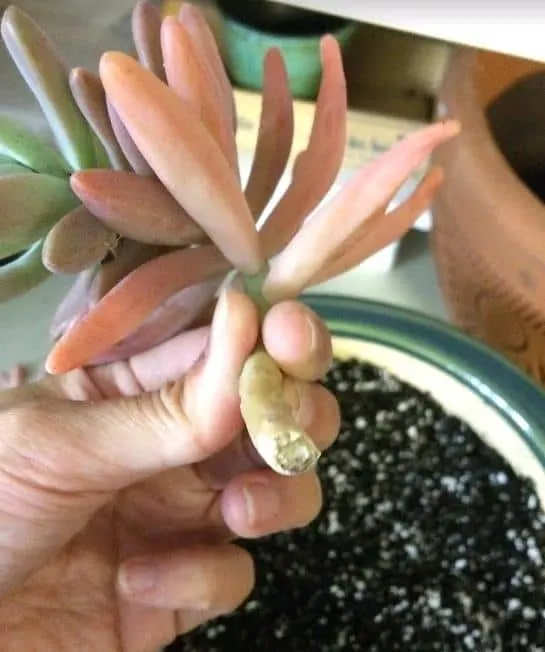
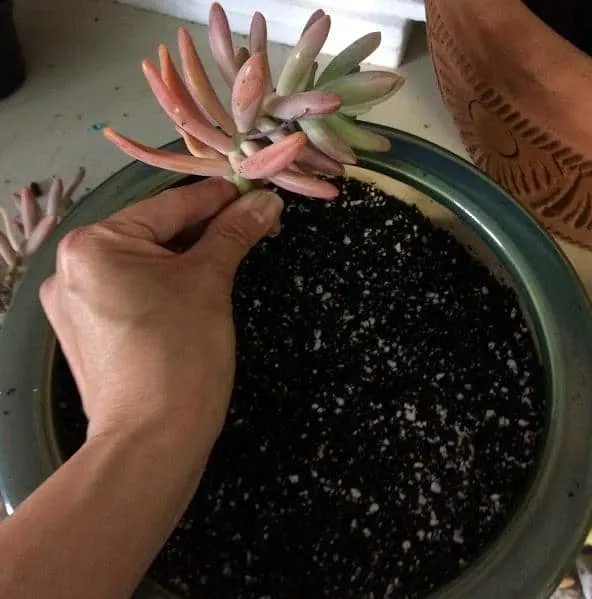
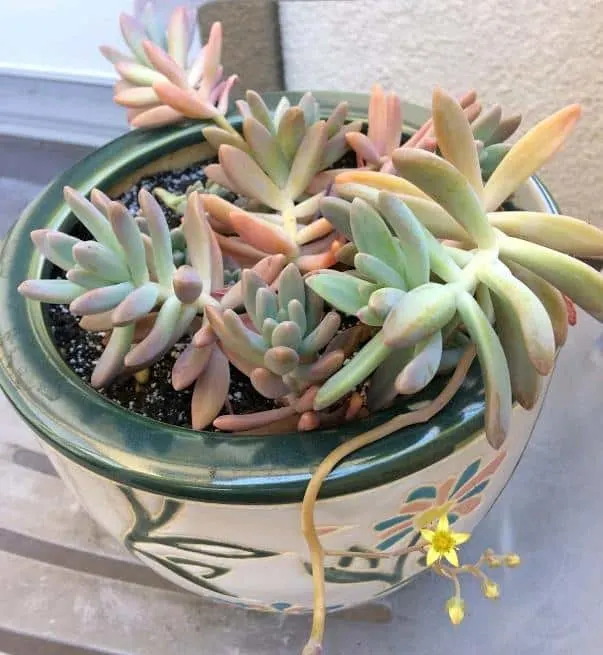
Allow the stem cuttings to dry
I got rid of the rotting and dead parts. I waited a few days to let the cuttings dry out and callous over. Here’s what I mean by that. You want the cut stem to be completely dry before planting in soil. I filled a pot with a mixture of cactus soil and perlite then I carefully planted the stems in the soil. They look very droopy right here because they are very dry and dehydrated. I gave it a good drink and just let it rest in a partially shaded area until they develop stronger roots.
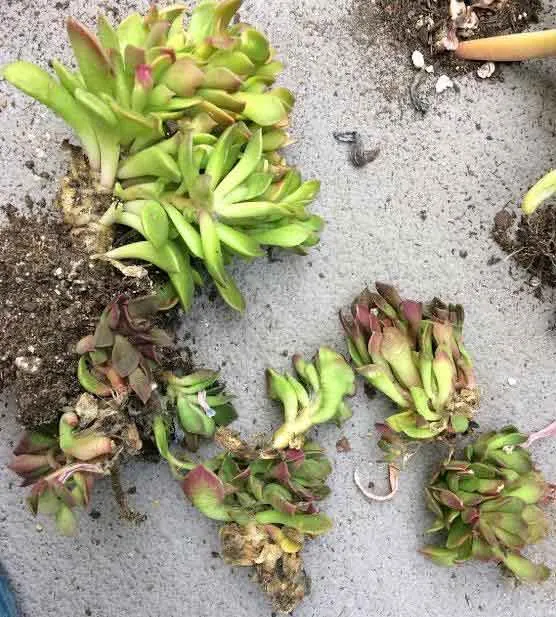
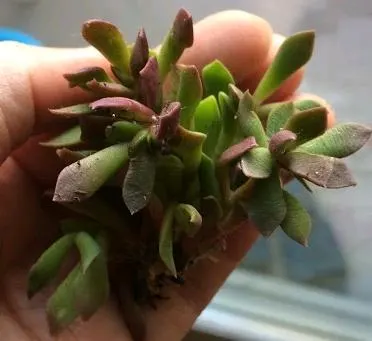
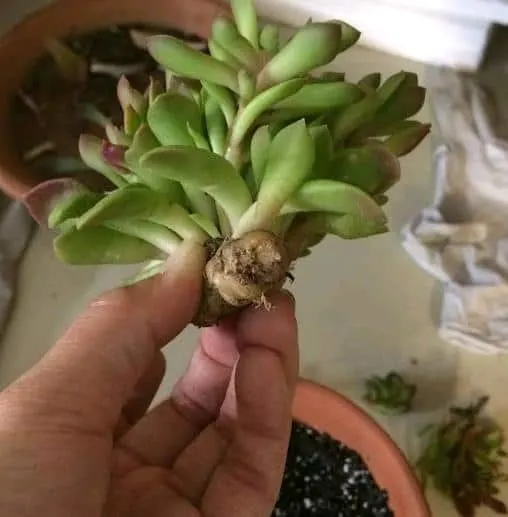
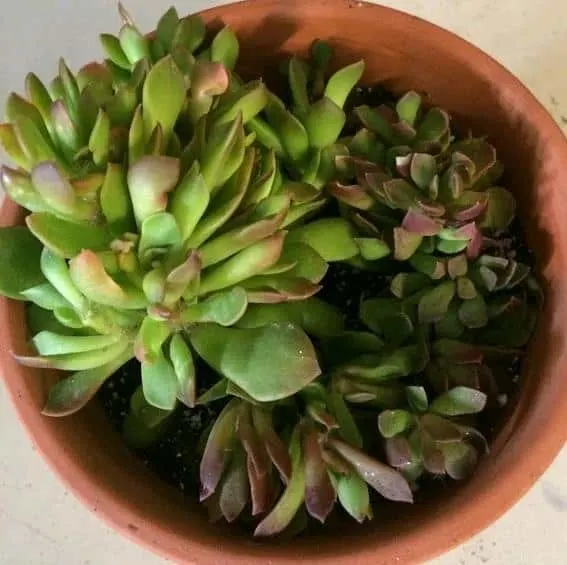
These Anacampseros Rufescens (Sand Rose) were also not looking so great in the pot. I removed most of the old soil and trimmed off any dead leaves or rotten roots. I let the cuttings dry and heal for a few days and transplanted them in a pot filled with cactus mix and perlite. I gave it a good drink because they are so dry. It will take a few weeks for the plants to recover and start developing stronger roots. In the meantime, I’ll keep it in a bright location away from full sun to avoid burning the plant.
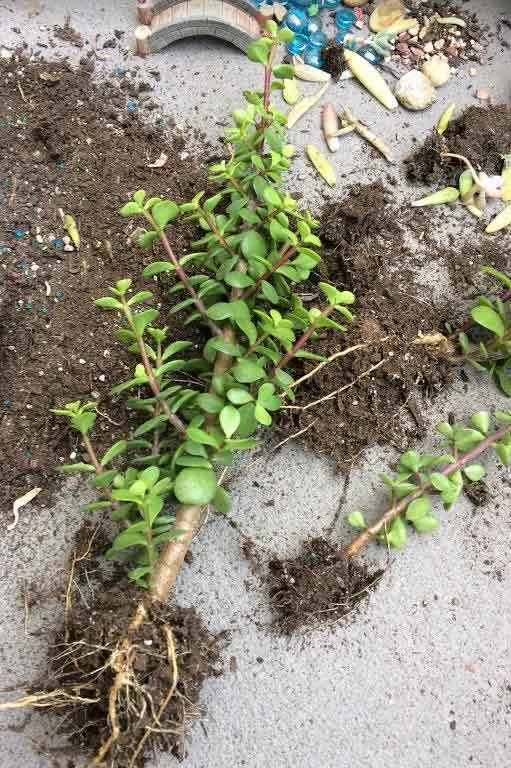
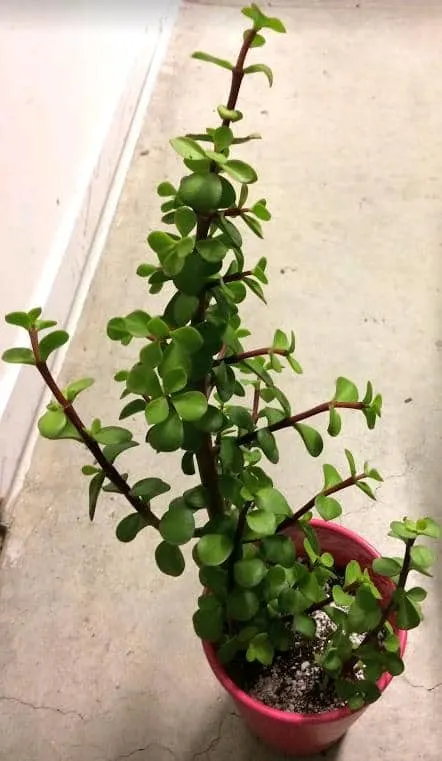
These Portulacaria Afra (Elephant Bush) have grown tremendously in over a year with very healthy roots. These could be potted right away and do not need to be dried before repotting since I didn’t snip anything of.
Another plant that’s been neglected and in need of attention is this sorry-looking Sedeveria ‘Jet Beads’ (Jet Beads Stonecrop).
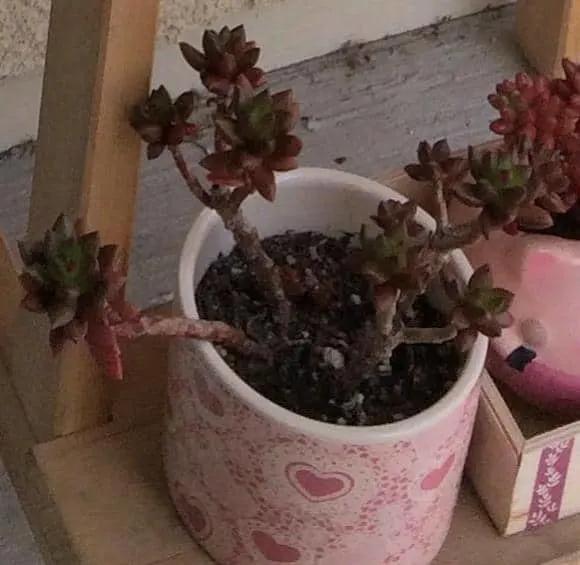
Sedeveria ‘Jet Beads’ where stem cuttings were taken from. Its growth has remained stunted ever since cuttings were taken from it over a year ago.
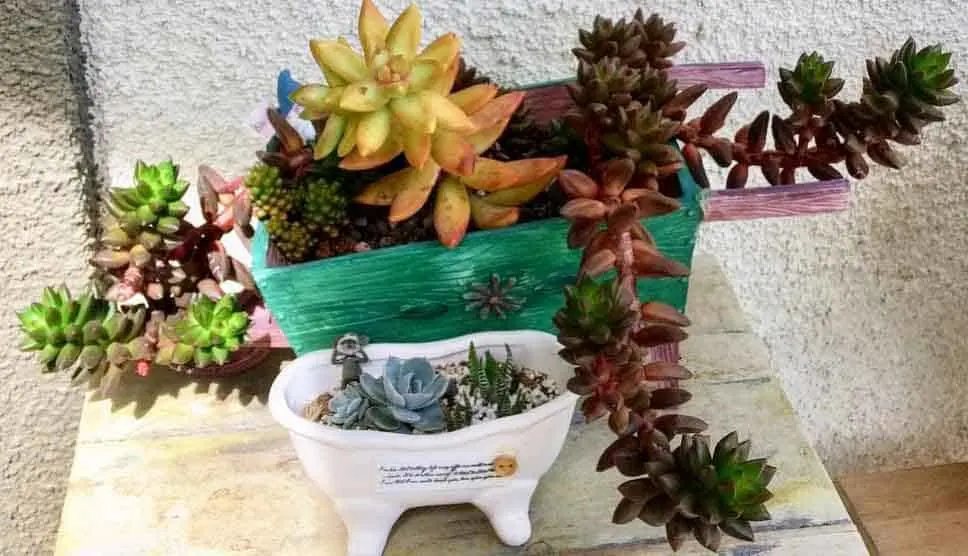
Sedeveria ‘Jet Beads’ stem cuttings growing beautifully. The stem cuttings were taken from this other plant. You can clearly see the difference in growth between the two plants. They are receiving similar care, sunlight, etc.
Cutting the stems to grow new roots
Believe it or not these are actually the original plant where these other Sedeveria ‘Jet Beads’ came from. I took cuttings from this plant and transplanted the stem cuttings in this pot. The cuttings are thriving and growing nicely but the mother plant isn’t. I really am puzzled with this one because usually when I take cuttings from a plant the plant will recover and shoot out new growth from where the cuttings were obtained. But this one was not happy after the cutting and kind of stopped growing for a while. Both plants receive similar amount of sunlight and the same care. So I’ve decided it is time to take care of this plant and hopefully see it thrive once more.
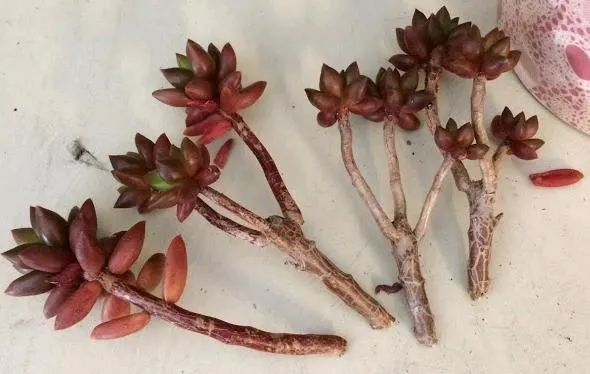
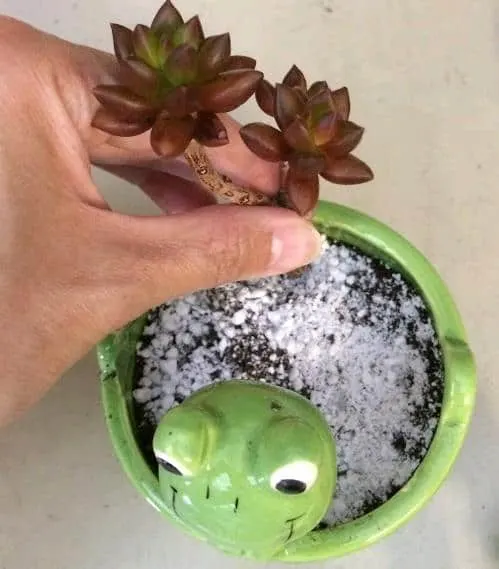
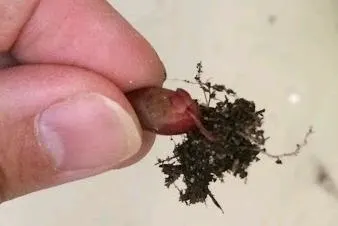
Plant the cuttings
What I did was to cut off the stems and let them dry for a few days. I then stuck the dried stems in pot with a mixture of cactus mix and perlite. Hopefully the stems will grow nice roots and the plant will have healthy new growth in a few weeks. The leaves of this plant root and propagate easily too. Some of the leaves that were already growing roots and a new plant. I just stuck them in the soil with the rest of the plant and let them all grow together.
I haven’t decided whether to discard this stump or not. The roots are still very healthy and oftentimes, new plants will emerge from where you cut the plant. I might just hold on to this, replant and see what happens.
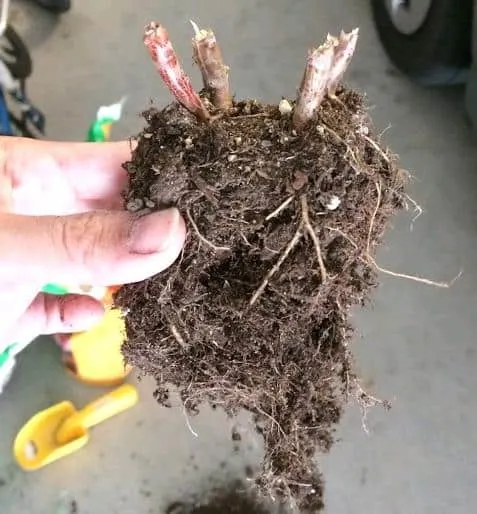
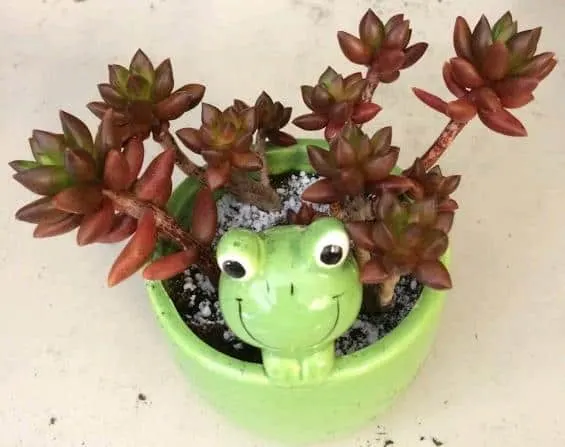
Here’s how I potted the stems. Hopefully the plant will begin to thrive once again.
Finally, I had these two other plants that were growing nicely and outgrowing the small pots they were in. How I know they are outgrowing the pot is the plants are shooting out roots and baby plants were popping up. I wanted to give them room to grow and spread out. The plants are Sedum Aurora (Pink Jelly Beans or Pork and Beans) and Crassula Perforata (String of Buttons). I love these two plants because of their color and beauty and I certainly want more of them to grow.
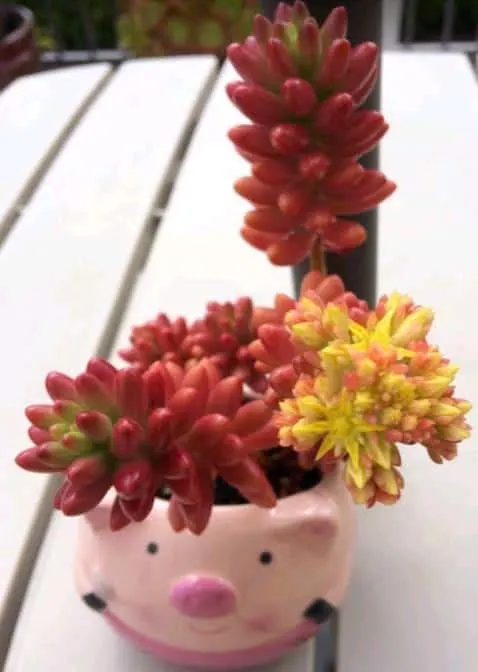
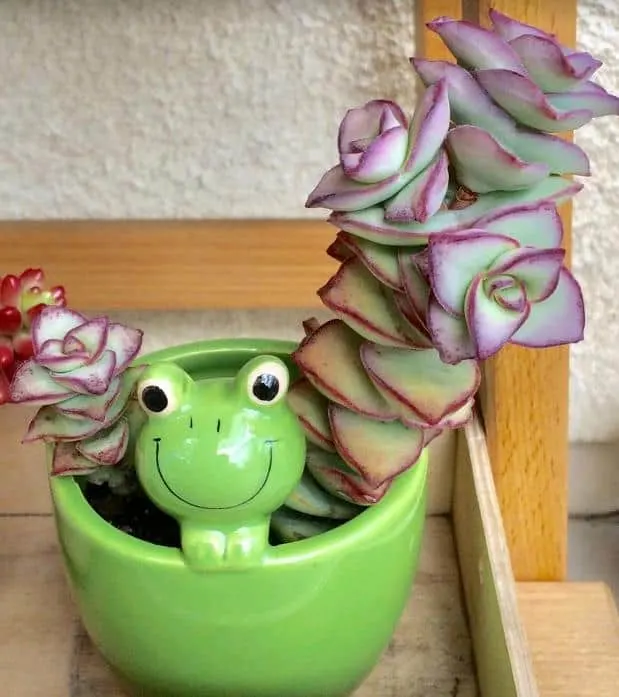
Remove from the pot
It was actually tricky to get the plants out of the pots because they have grown big and the pots had a small opening. I eventually was able to pull the plants out with as little damage as possible. These Sedum Auroras (Pink Jelly Beans) have fragile leaves that can fall off easily when transplanted. Good thing is they also root and propagate easily. I usually just stick them back in the soil and let them root on their own.
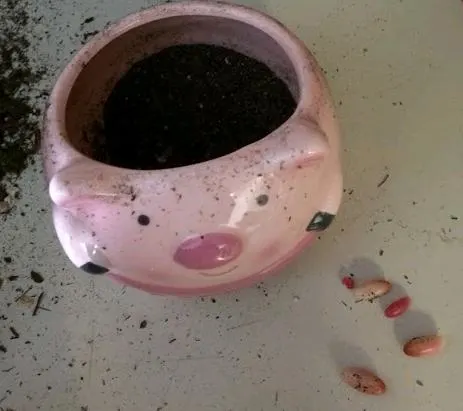
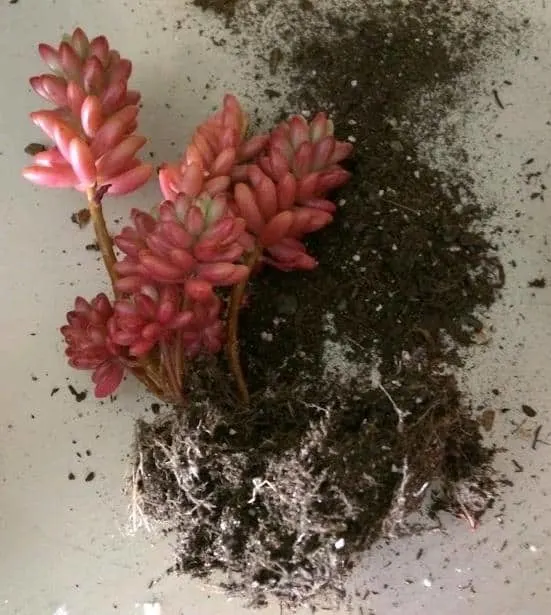
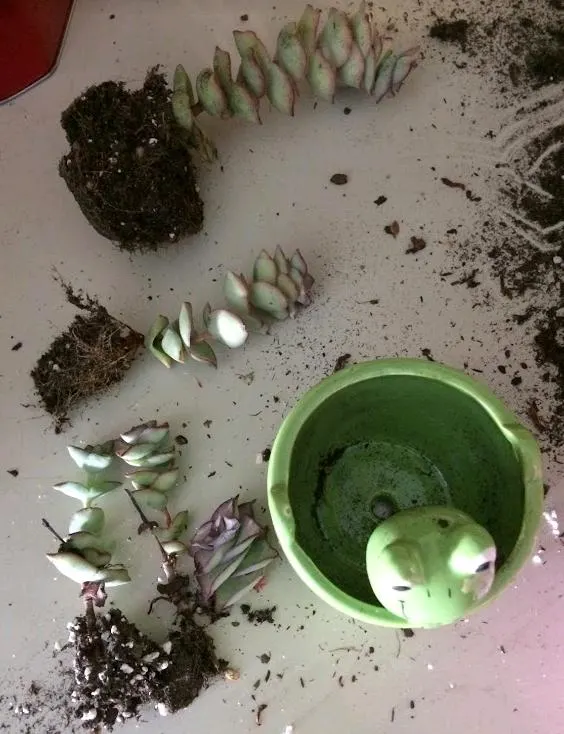
Prepare your potting mix
Again I used a mixture of cactus mix and perlite. These plants I replanted right away and did not need to dry out because I did not make any cuttings or introduce any open wounds that needed to heal. I decided to put them together for now because I thought they would look good together and I found this really cute pot for them.
I wanted a few more cuttings of the Pink Jelly Beans that I had growing in another pot so I just trimmed a few cuttings. Notice the color difference between these two. They are the same plants but grown with different lighting. The lighter one was growing in this huge fairy garden and shielded from the sun by other taller plants. The other plants with more vivid colors were receiving more sun. I let the cuttings dry for a day or two. These stems are so thin that they dry out really fast. I stuck the dried stem cuttings along with the other plants. Here’s how they look planted together.
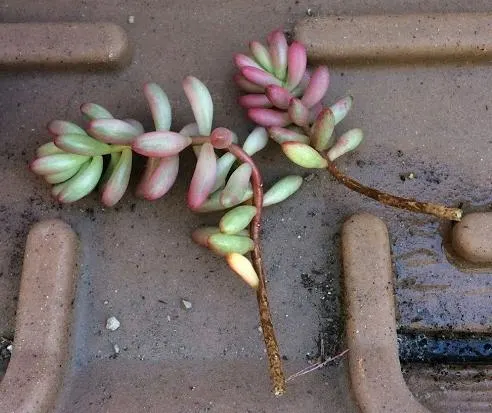
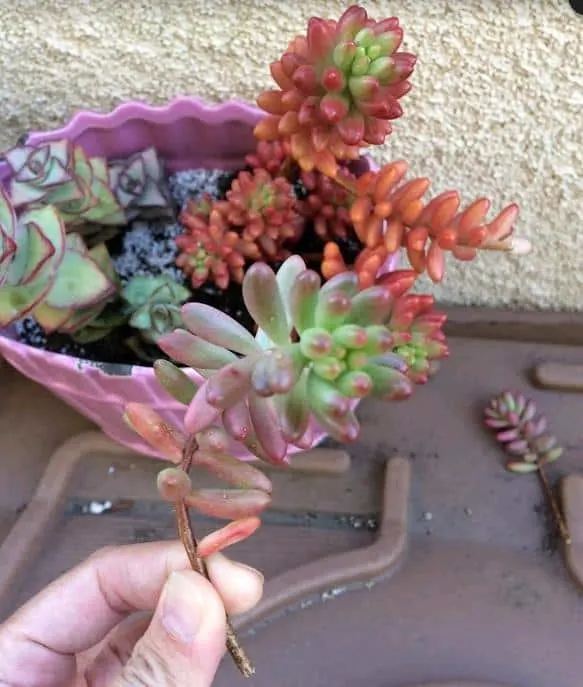
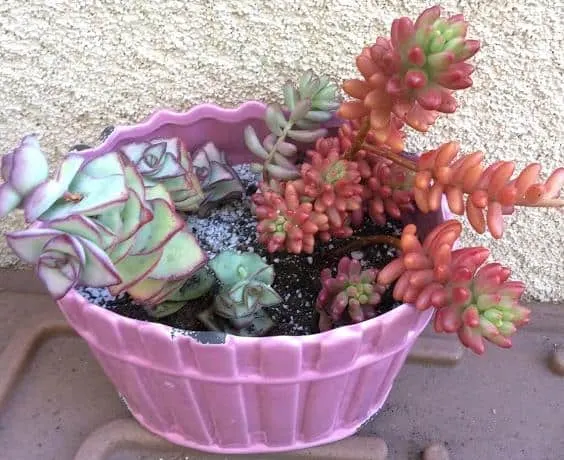
So there you go. I pretty much leave my plants alone and do not repot that often. I like to choose a pot that they can grow into for a while before transplanting again. There are times, as you saw above, when repotting will actually be better for your plants and will give them a chance to spread out and grow more.
To read about how to choose the right pot for succulents, please click on “Choosing the Right Pot for Succulents”. For recommendations on which pots and potting benches to purchase, please check out my resource page.
